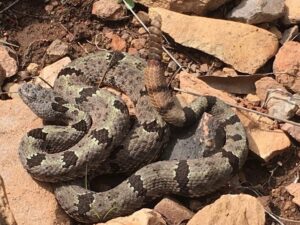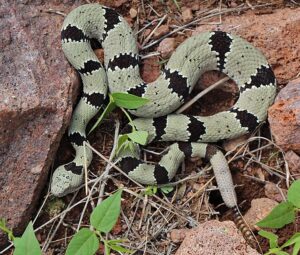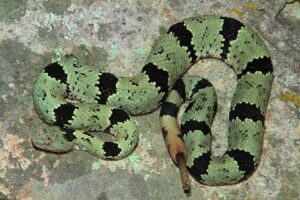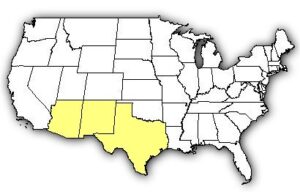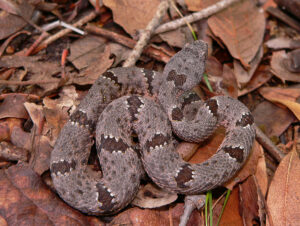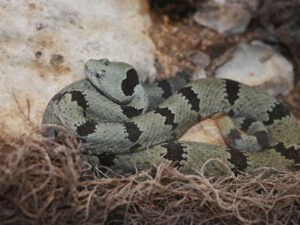Banded Rock Rattlesnake (Crotalus lepidus klauberi)
Updated on
25/04/2024The banded rock rattlesnake is a small, nocturnal pit viper subspecies that is also known by the names green rattlesnake, blue rattlesnake, rock rattlesnake, and green rock rattlesnake. It is native to the southwestern United States and neighboring northern Mexico. The specific name klauberi is in recognition of Laurence M. Klauber, an American herpetologist and rattlesnake expert.
Scientific Classifications
- Suborder: Serpentes
- Family:Viperidae
- Genus:Crotalus
- Species:C. lepidus
- Subspecies:C. l. klauberi
Conservation Status
Description
Size
The adults seldom grow more than 24 in (61 cm) in length.
Color and Appearance
The color pattern is typically dark grey banding on a lighter grey background that varies greatly with habitats. The background color can be green to purple in some regions. Specimens found in the Franklin Mountains of El Paso County, Texas, are unique, with a striking pearl silver background and distinct black crossbands.
The head is distinctly wider than the neck giving the head a diamond shape. The pupils are elliptical and rattle proportionately small.
Are They Dangerous to Humans
These snakes are quite shy, often not even rattling when approached. Instead, they rely on camouflage to blend into their rocky habitat. However, individuals found at high altitudes (greater than 7000 ft) of the Organ Mountains, southern New Mexico, are extremely confident and defensive, rattling continuously at just the sight of humans. But one must search carefully for the source of rattling as they are experts at hiding in cracks and small caves in the rocky terrain.
Despite the fact that their venom is 1-1.5 times more potent than western diamondback rattlers, its necrotic properties and venom yield is much less. Though this doesn’t make the snake any less dangerous, as they usually reside in remote areas inaccessible to the general public, they are not considered a major threat to humans.
Banded Rock Rattlesnakes at a Glance
Distribution
In the US, it is found in New Mexico, Arizona, and Texas. In Mexico, it lives in the states of Baja California, Coahuila, Chihuahua, Jalisco, Durango, Nuevo León, Sonora, San Luis Potosí, Zacatecas, and Tamaulipas.
Habitat
It is often found in scree slopes, canyons, and man-made road cuts. Research suggests that they don’t travel far, often spending their entire life on one particular ridge or slope. The nocturnal, secretive snake spends most of its time hiding in rock crevices. They are mostly seen after a rain shower or summer afternoon thunderstorm when they come out to bask and forage.
Lifespan
Though the lifespan of the banded rock rattlesnake in the wild is unknown, it can live for 23-33 years in captivity.
Predators
Its main predators are humans and other mammals.
Diet
Lizards and rodents caught by envenomation form their primary diet.
Reproduction
Ovoviviparous (gives birth to live young from eggs that hatch inside the body)
After mating in the summer, the gravid females undergo hibernation in winter. A female gives birth to 2-8 young in a litter in spring. The neonates are 6 in (15.24 cm) long.
Source
dovemed.com, i.pinimg.com, twitter.com, venombyte.com, pinglelist.org, theonlinezoo.com

